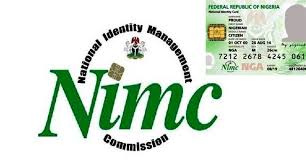The Zimbabwe’s recently adopted currency, condemned ZiG, appears to be suffering from the same lack of credibility as other currencies before it.
Previous attempts to restore a viable local currency failed largely because the cash-strapped government resorted to printing money to fund the budget.
However, during the unveiling of the Zimbabwe’s ZIG, the Central bank Governor John Mushayavanhu vowed that past mistakes will not be repeated under his watch.
ZiG replaced the Zimbabwean dollar in April 2024 and is the nation’s sixth attempt since 2009 at creating a local unit that can supersede the greenback in domestic transactions.
But it’s been dogged by similar obstacles that have kept Zimbabwe locked out of international capital markets since it defaulted on $21 billion of debt in 1999.
The ZiG’s failure to flourish comes despite the backing of 3.1 tons of gold held at the central bank, which has promised to stop printing money to finance government spending – the cause of previous currency flops.
The southern African country has suffered a succession of economic crises, the near-collapse of government services, widespread poverty and unemployment, and hyperinflation that at one point exceeded 500 billion percent, according to IMF data.
Without a domestic currency, a government lacks important levers for managing the economy, from setting interest rates to controlling money supply.
The Zimbabwean dollar was brought back to life in 2019 after a decade-long furlough. Its value slumped by 80% between the start of 2024 and April 5, when the newly appointed Mushayavanhu put it out of its misery.
At that point, more than four-fifths of the southern African nation’s economic activity was being transacted in US dollars, with some businesses only accepting payment in greenbacks.
In the end, it proved impossible to dispel public mistrust in the Zimbabwean dollar that has lingered since 2008, when people’s savings were wiped out by hyper-inflation.
According to Bloomberg, the ZiG started trading on April 8, 2024 at a rate of 13.56 to the dollar, with an international currency code registered as ZWG. Banks, mobile-money platforms, retailers and other intermediaries gradually reconfigured their systems to take account of the new currency. Holders of Zimbabwean dollar accounts had their balances converted to ZiG. The change affected share prices on the Zimbabwe Stock Exchange, which rebased its 56 listed securities.
The central bank said the ZiG would be fully backed by gold and cash reserves which at the end of May were valued at nearly $700 million, according to local media. To foster demand, Zimbabwe has made it mandatory for companies to settle at least half of their quarterly tax obligations using the new unit.
So far, not so good. Dollars remain the dominant form of exchange, despite official efforts to make Zimbabweans use the ZiG by ordering government services to be paid for in the unit. They also fine traders for refusing to accept payment in ZiG.
It’s fallen steeply against the dollar, including a 43% devaluation in September, and was quoted at 26.96 per dollar on the central bank’s website on June 10, barely half of its value at launch. The unit is even weaker on the unofficial market at 32-35 per dollar. And that’s if you can find it: ZiG notes have become quite scarce since the central bank restricted the money supply, causing a liquidity crunch that’s hit traders and the stock market.
Finance Minister Mthuli Ncube said in February that the southern African nation needs to regain access to international lenders before the country can drop the US dollar and just use the ZiG.
Support for making ZiG the sole curency was voiced by the International Monetary Fund in June. The Washington-based lender is weighing request from Zimbabwe for a staff-monitored program, which is designed to encourage policy discipline and could help it take a step toward restructuring its multi-billion dollar debts.










































